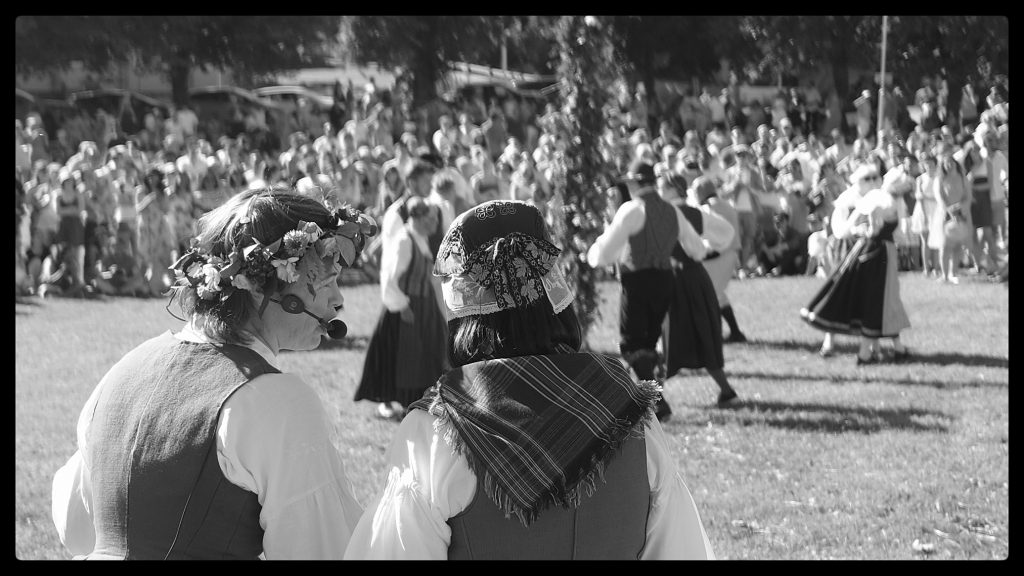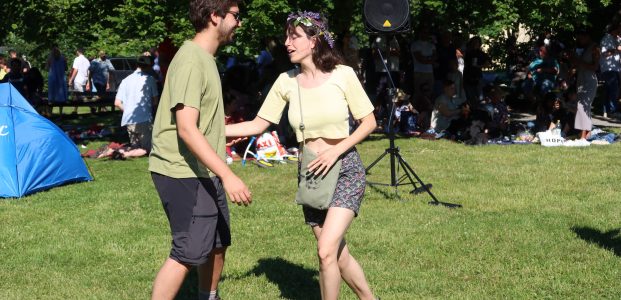Today is Swedish midsummer. This is a big deal in Sweden and everyone celebrates in some way. Judging from the number of boats heading the other way today, the vast majority head out to the islands, but we had decided to book in at Vaxholm and see how midsummer is celebrated in a town. We left Ekholmen shortly before 10am and almost straight away managed to start sailing – a distinct novelty for recent trips! We then had a lovely sail with the engine coming on shortly before Vaxholm Castle to head round to the guest harbour. There we moored alongside some friends from Woodbridge to catch up with them. A total of just 7 miles, but for once a peaceful interlude.
Midsummer (midsommar in Swedish) has a distinctly pagan feel about it as a celebration, but it stems apparently from a Christian holiday for John the Baptist, which took place on 24 June. The evening before midsummer is known as St. John’s Eve. It is likely though that many of the traditions come from pagan pre-Christian roots connected with the celebration of the summer solstice. One of the traditions is the raising of the maypole (majstång or midsommarstång). Given that midsummer is always celebrated on the Friday which falls between 20 and 26 June, it seems odd that the pole is called a maypole. The origins of this perhaps stem from people decorating their houses and barns with greenery; this was meant to bring good fortune and health to people and livestock. The process of decorating with greens was called att maja (to may) and this may be the origin of the word majstång. Some people though suggest that the term comes from German merchants in Sweden who raised the maypole in June because the Swedish climate meant that there wasn’t enough greenery to decorate it in May! Stories of this nature abound and the reality is quite hard to separate from the myth. For example, many suggest that the midsummer pole is a phallic symbol and that the holiday was originally meant to celebrate fertility – a nice story, but truth or lie? There is little evidence for it …..
Once decorated the midsummer pole (midsommarstång) is raised. We watched this on the Lägret at Vaxholm along with hundreds of others. Having assumed that this would be a highly organised and coordinated affair, completely the opposite transpired. When they asked for volunteers, a whole mob of people came forward and grabbed the midsummer pole and with the help of two poles (looking a bit like extended versions of a washing line pole!) it was gradually pushed into place. At times we gave the odds of it actually going vertical around 50:50 as it swayed around with people rushing from side to side to prevent gravity doing what it does best. However, it finally got there to a round of applause while men in hi-vis jackets bolted it securely to the ground.
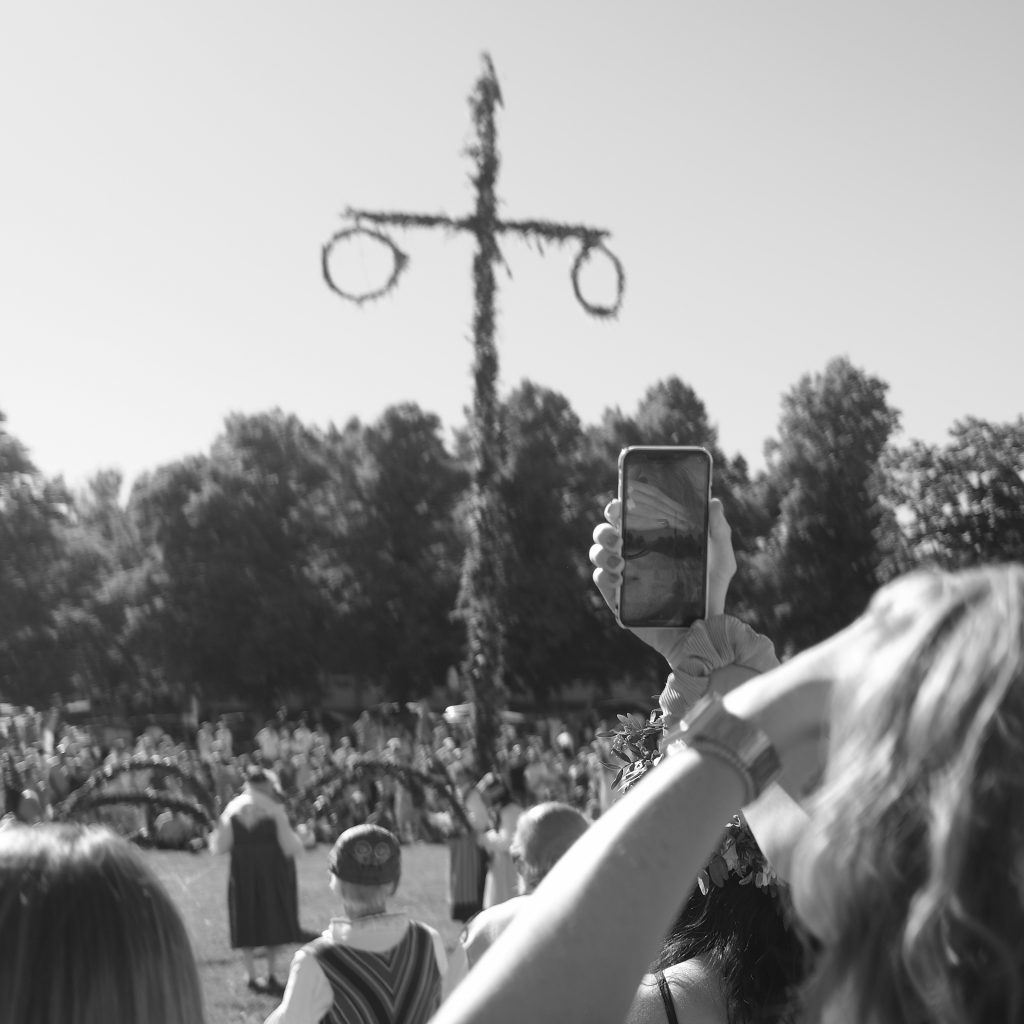
Once the pole was raised, the fun (?) really started. With a musical accompaniment from a nyckelharpa and an accordion, the dancing began. A nyckelharpa is a “keyed fiddle”, or literally “key harp” and is a traditional Swedish stringed instrument. It could also be called a chordophone. The keys on it, when pushed down, serve as frets to change the pitch of the string. While the music was pleasant enough, it would be fair to say that the ‘band’ did not look that excited about it!
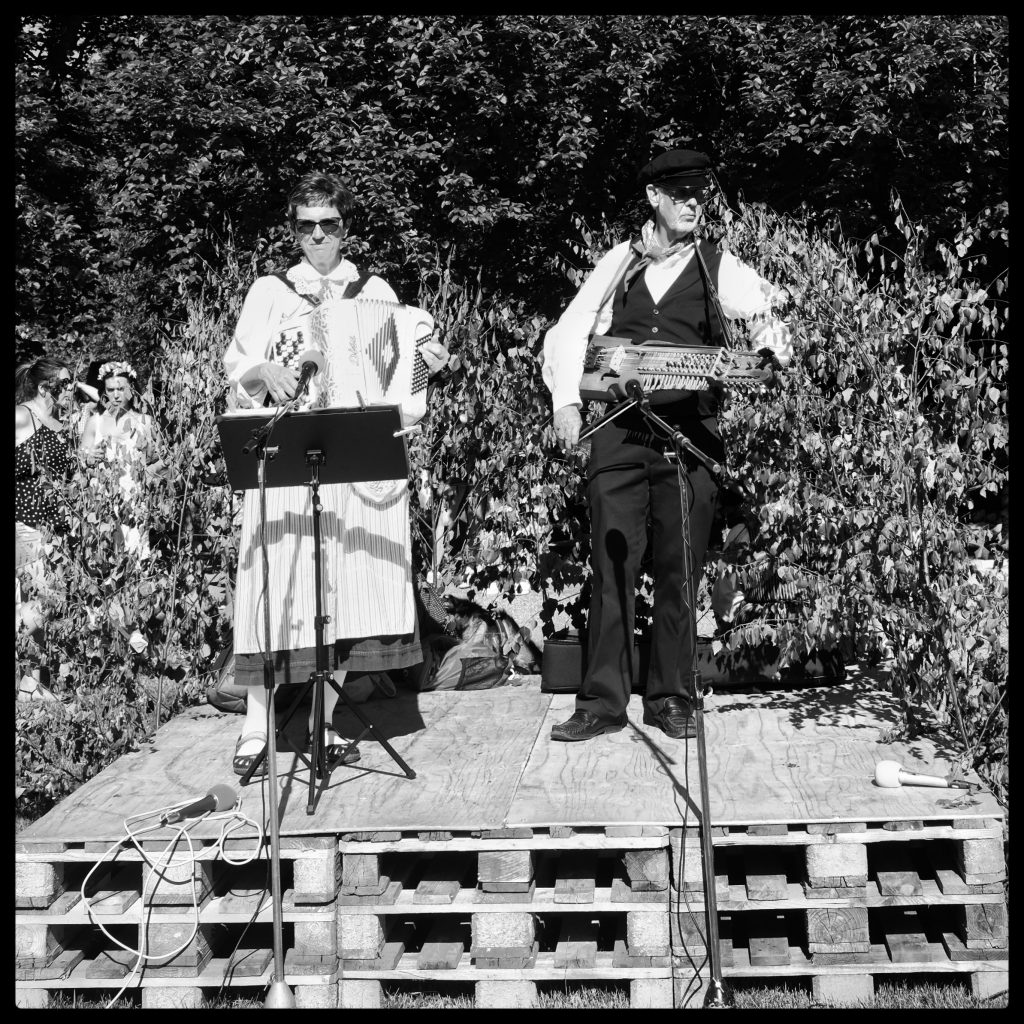
The dancing was initially done by a group of experts (?). They had apparently been practicing all year – we did (slightly unfairly!) feel that another year might have helped though. Nevertheless, it was intriguing to watch as they went through various traditional dances from different areas of Sweden. The age structure of the group was such though that we did wonder how many more midsummers they would be dancing ….
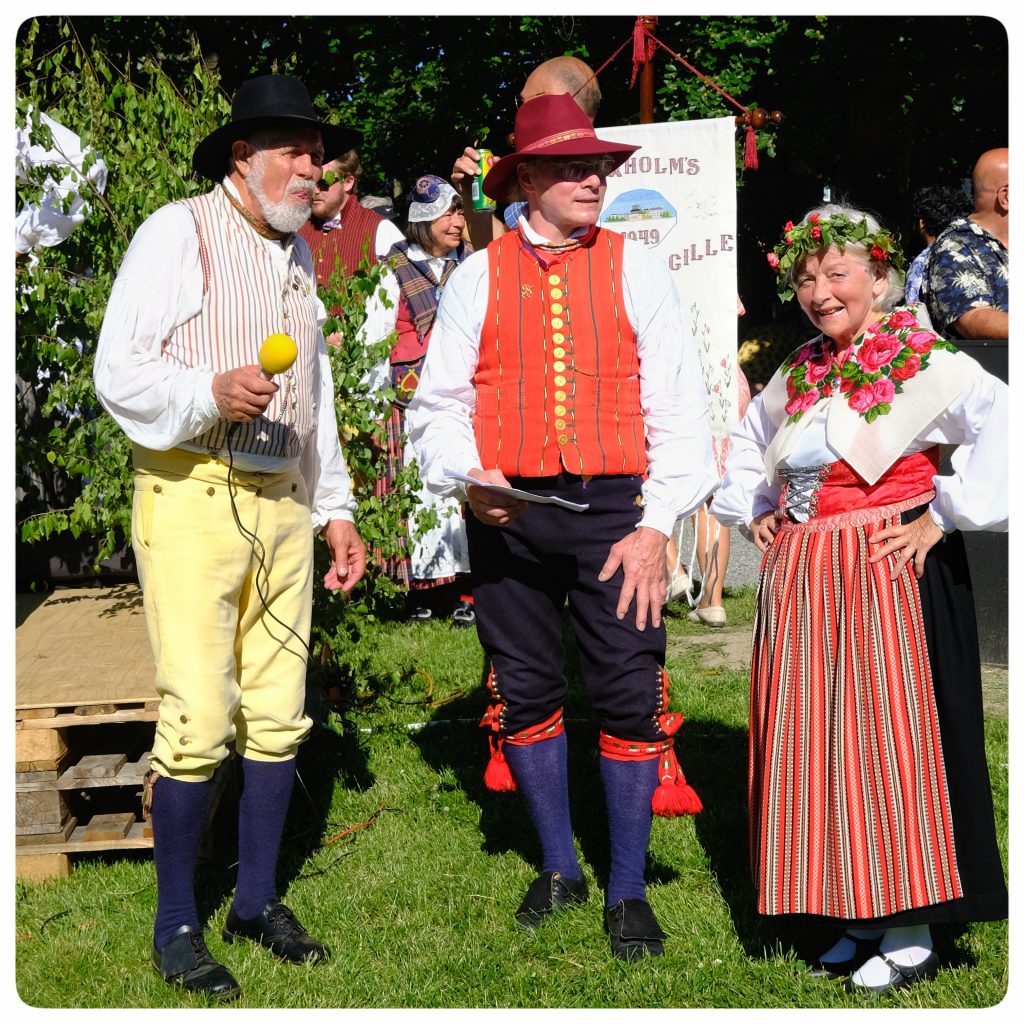
Once they had finished their ‘set’ it was time for everyone to join in, in a form of general bedlam that was apparently a traditional dance. We felt that observing was much the safer option as hundreds of people danced round in circles with the dancing interspersed with some worrying sound effects – various forms of coughing and snorting among others. Perhaps it was a Swedish version of Ring a Ring o Roses! One of the most traditional dances is called Små grodorna which translates as The Little Frogs dance. The lyrics of the song describe frogs in intimate detail and without regard to anatomical accuracy. It may be best not to remind the Swedes that the melody for the song comes from a Napoleonic marching song called “La Chanson de l’Oignon” (“The Onion Song“). The British troops then apparently ironically changed the lyrics to “Au pas, grenouilles!” (“In step, little frogs“). The dance to Små grodorna is accompanied by various movements and the dance is one of those things that once seen, cannot be unseen …. So, when in Scandinavia, just embrace your inner frog and start dancing round the midsommarstång. A visit to the System Bolaget beforehand may help with this – more alcohol is consumed at midsummer than on any other individual day!
Another midsummer tradition is to put a wreath of flowers in your hair. This should apparently have seven different kinds of flowers (though in some parts of the country it’s nine). You then put them underneath your pillow and you will apparently dream about your future husband or wife. Perhaps this explains Boris Johnson’s marital history – he has put too many Swedish flower wreaths under his pillow …..
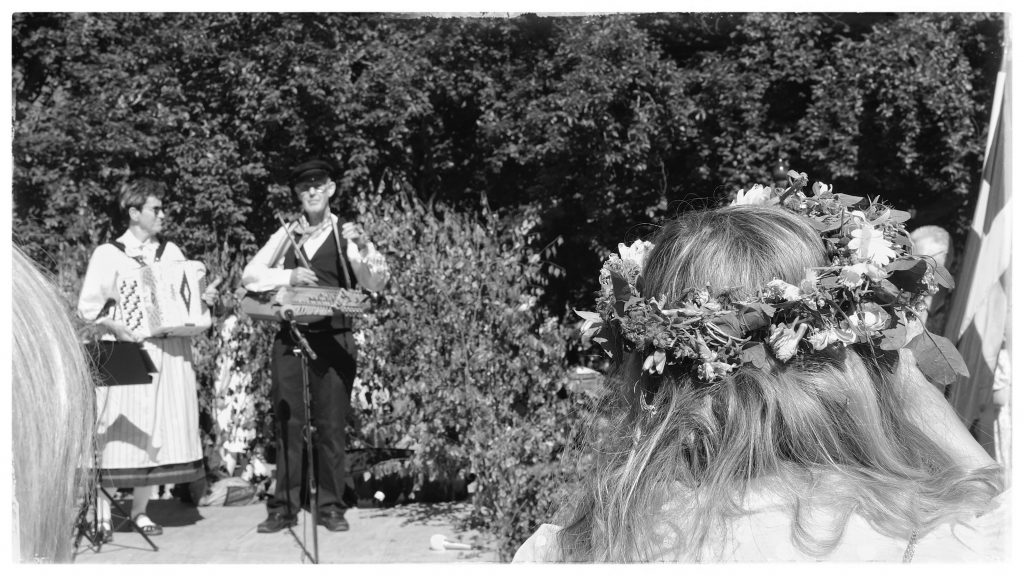
So, this is a traditional Swedish midsummer – drinking, dancing like a frog round a phallic pole (with two rings hanging off it!), eating lots of herring and potatoes rounded off with strawberry cake and all finished off apparently with skinny dipping. What’s not to like …….?
